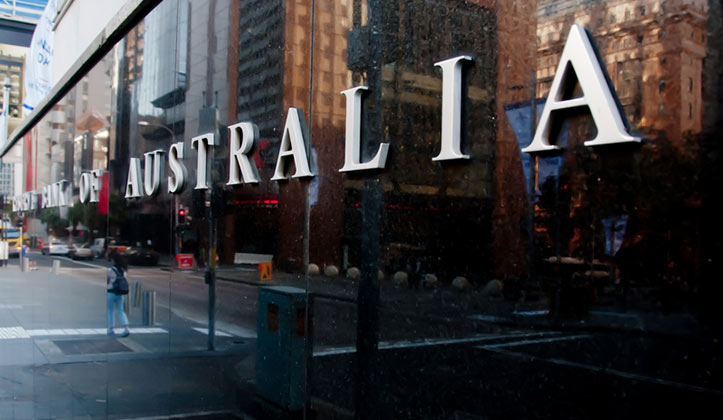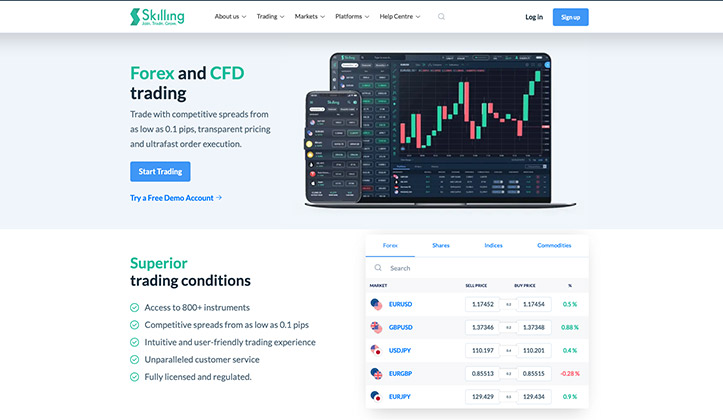Forex trading in Australia: RBA struggles with monetary policy

The Central Bank of Australia, RBA, has struggled with how to deal with the rise in prices lately. Monetary policy is one of the factors that everyone involved in forex trading checks.
Australia’s central bank, the Reserve Bank of Australia (RBA), has dumped its yield curve management policy and turned into one of many massive central banks acting against a post-pandemic cost increase.
The central bank said on Tuesday that it will now not try to keep the interest rate on three-year bonds at 0.1 percent, after a week of turbulence in short-term bond markets during which interest rates soared after the RBA declined to defend its ceiling.
Table of Contents: Overview
The RBA interrupts the return targets
The change makes the RBA one of many first central banks from a sophisticated economic system to tighten monetary policy in the wake of the pandemic.
“The choice to suspend the yield target shows developments in the economic system and the faster-than-expected progress towards the inflation target,” said Philip Lowe, governor of the RBA, following a meeting of the central bank’s board.
But while the RBA relaxed its handling of the yield curve, it also signaled that it was in no hurry to raise short-term interest rates, and promised to keep them on hold until inflation was sustainable within its target range of 2-3 percent.
“This may require the labor market to be tight enough to generate wage growth that is significantly greater than it is at present,” Lowe said. He added that it could most likely take a while to reach it and that the central bank was ready to become the “affected person”.
The RBA maintained the overnight rate of 0.1 percent and maintained its promise to buy government bonds for a fee of A $ 4 billion ($ 3 billion) by at least mid-February 2022.
The fragile stability of the enjoyable yield curve, while the promise to keep interest rates low for a while, illustrates the dilemma for central banks in the wake of the Covid-19 disaster.

Rating: 9.56/10
Minimum deposit: 100 GBP
Description: Which central bank do you think will raise the interest rate next time? Norway? UK? Try forex trading with a safe and transparent broker – with a free demo account at Skilling today!
Risk warning: 76% of retail investor accounts lose money.
Crucial disruptions in global supply chains
Economies that reopen after the pandemic have been confronted with crucial disruptions in global supply chains, which is pushing costs and key markets upwards to anticipate an earlier rise in interest rates.
The price inflation for the Australian shopper works with an annual fee of three percent, according to figures released last week, pressured by petrol and housing prices.
Although higher short-term inflation is worrying, central banks are reluctant to raise interest rates as a result of the economies not fully recovering from the pandemic. They are worried about the return of the deflationary pressure that outlined the 2010s and led to zero interest rates in many superior economies.
The RBA adopted management of yield curves – a policy first used by the Bank of Japan – in March 2020. It set one-day fees and three-year returns at 0.25 percent, and then minimized them to 0.1 percent in November 2020.
During the management of the yield curve, a central bank guarantees to buy as many bonds as desired to keep the yield at a safe stage. It enables it to manage long-term interest rates and add additional monetary stimulus when charges are already zero in a single day.
Last week, the RBA raised the three-year interest rate by the ceiling. It was traded at 0.975 percent after the monetary policy decision, which indicates that interest rates in a single day would rise a number of times earlier than 2024.
The shift makes the RBA the primary central bank that withdraws from a policy of managing the yield curve, creating a necessary precedent for the BoJ, although the Bank of Japan is unlikely to release its policy for a number of years.
Why control the yield curve in the first place?
When COVID hit the world last year, the bank announced that it would buy enough government bonds to keep the yield on the three-year bond at 0.25%, as well as guaranteeing that money would be cheap for many years to come.
Later, the Bank of Australia lowered the three-year bond yield target (and its cash yield target) to almost zero 0.10%, further lowering the cost of borrowing.
In response to an improved economy, the bank decided at its meeting in July 2021 not to extend the programme’s bond target beyond April 2024. The decision created a reasonable expectation that the cash interest rate would remain close to zero until 2024.
What did the control of the yield curve achieve?
Control of the yield curve achieved a lot. It took the bank just 11 days and $ 27 billion in bond purchases to achieve its first goal, to establish ultra-low interest rates for several years into the future.
After that, it did not have to spend much. The new three-year interest rate became the new norm. The markets thought they would do whatever it took to defend it.
Over the next 18 months, the Reserve Bank of Australia only occasionally intervened in the market and only in small quantities. Everything changed last week.
On October 15, 2021, the three-year bond yield began to climb above the bank’s target of 0.10%. It initially bought enough bonds to defend the price and then capitulated, without warning, on Thursday, as well as to withdraw from the market and let the price climb to a peak of 0.70%.
On Monday, the share price had climbed to more than 1.00% – more than ten times the Reserve Bank of Australia’s target.
Trade economics
Last week’s announcement only did the formal thing that was clear on Thursday: the bank will no longer spend public funds to defend a border that may eventually be crossed. Bond traders believed that the improved economic outlook meant that the bank would need to raise its record low cash rate earlier than it had said it would. The lost will not agree.
In a press conference, Governor Philip Lowe said it would have been unsustainable to keep the target. Eventually, the bank would have owned all the three-year bonds offered.
Trading with AUD
All major currency brokers today offer trading in AUD. Skilling (review) has as many as 10 currency pairs against AUD. You can trade EUR/AUD, AUD/SGD, AUD/USD, AUD/NOK, GBP/AUD, AUD/CAD, AUD/PLN, AUD/CHF, AUD/NZD and AUD/JPY. Try a risk-free and completely free demo account yourself today!

Rating: 9.56/10
Minimum deposit: 100 GBP
Description: Handla AUD in a simple manner, with 100% transparency and excellent trading conditions. Try Skilling today!
Risk warning: 76% of retail investor accounts lose money.
Published:
Author: Markus Jalmerot
TAGGAR
Other similar news
Below you can see more similar news if you want to learn more about this subject or find related topics.Everybody knows there's a war going on in Ukraine, Russia is trying to take over the country and the...
Recently we've seen headlines all across the globe shouting about how Russia is preparing to invade ...
It's been roughly 2 years since the start of the Corona pandemic, one of the biggest events in moder...




